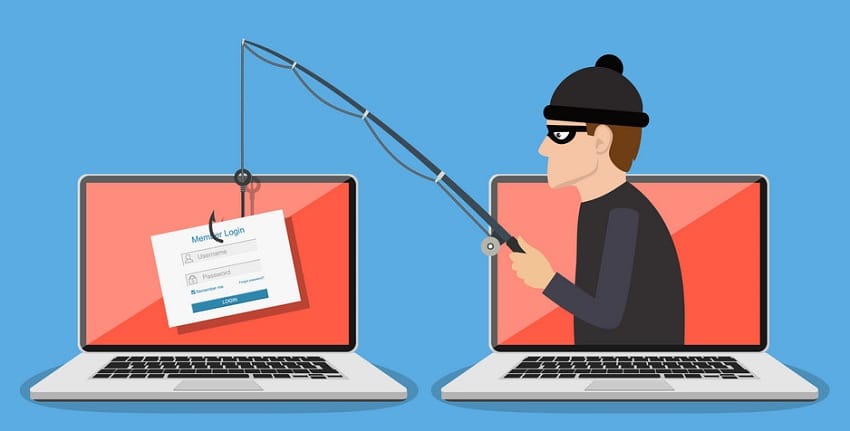You know for sure, Mobile device malware is security threats to your mobile devices! Install a mobile antivirus app, Is that it? In addition to mobile device malware, there are more pressing mobile security threats that could jeopardize your corporate data and personal information!
The cybercrime landscape is constantly changing as hackers seek out more sophisticated ways to make money. A recent report published by Kaspersky shows that the platform detected more than 3.5 million pieces of malware in 1 million user devices within a year.
Besides, IT Web reported that more than 230,000 new malware programs detected daily, and most of them target mobile phones and other handheld devices.
It is no surprise mobile security ranks top in every organization’s worry list. Nearly all employees routinely access corporate information from their iPads, tablets, and smartphones.
Thus, keeping sensitive information from the wrong people is an increasingly intricate puzzle. According to a 2018 report published by Ponemon Insitute, the average cost associated with a corporate data breach is $3.86 million. That’s about 6.4% more than the estimated cost in 2017.
Though most people and organizations focus majorly on the sensational subject of malware, the shocking reality is that mobile device malware infections aren’t prevalent. The realistic security threats lie in the simple but overlooked areas. Here are some of the pressing mobile security threats.
4 Types of Current Security Threats to Mobile Devices: More Serious than Malware & Virus
Navigation of Contents
1. Network Security Threats
Typical examples: Unsecured Wi-Fi, Insecure shared networks
Your mobile device is as secure as the specific network through which it is transmitting data. We are living in an era where nearly everyone is constantly connecting to unsecured Wi-Fi networks. Thus, there is a good chance your data isn’t as secure as you might assume.
Research done by Wandera, an enterprise security firm, shows that corporate devices use Wi-Fi networks at least three times daily as much as they use cellular data. About 25 percent of these devices have suffered man-in-the-middle attacks in which an individual maliciously interrupts communication. Meanwhile, McAfee warns that network spoofing is on the rise. Yet, less than 50 percent of mobile device users don’t bother to secure their connections when using public Wi-Fi.
According to Kevin Du, a professor in computer science at Syracuse University, it’s not easy to encrypt traffic these days. Kevin recommends the use of a VPN. Otherwise, you will be leaving lots of doors on your device perimeter open.
Most effective Solution: Avoid Free wifi-network, Using a VPN for a mobile device.
2. Information Security Threats
Typical examples:Browsing history, SMS, Address book and other personal Information leakage

Generally, these are free applications offered by official app stores that tend to perform as advertised. What you didn’t know is that some of them can send your personal information and potentially corporate data to a particular server. Advertisers or cybercriminals can easily mine this data.
Additionally, mobile data leakage can happen through hostile corporate-signed mobile applications. In such cases, the malware uses a distribution code similar to most mobile operating systems such as Android and iOS to spread important data across an organization’s network without being detected.
Therefore, it is crucial only to give mobile apps the essential permissions and forego programs that request for more than the necessary permissions.
Most effective Solution: Disable unnecessary app permissions!
3. Backdoor Security Threats
Typical examples: Cryptojacking and other similar attacks
Simply put, cryptojacking is a form of attack where an individual uses someone’s device for cryptocurrency mining without the owner’s knowledge. In case this sounds too technical, just know this: The entire crypto mining process uses your organization’s mobile devices for another person’s gain. This process leans heavily on tech, and that means the affected device might experience poor battery life and sometimes overheating.
Though it originated from the desktop, cryptojacking saw a surgeon mobile devices from 2017 through the early months of 2018. According to Skybox Security analysis, unauthorized cryptocurrency mining accounted for about a third of all cyberattacks. Besides, Wandera report indicated that mobile-specific cryptojacking increased by 287% between October and November of 2017.
Since, it appears these attacks have decreased in the mobile domain, thanks to the banning of cryptocurrency mining applications from Google Play Store and Apple’s iOS App Store. However, security firms warn that cryptojacking attacks continue to see a high level of success via rogue ads on mobile sites and apps acquired from unofficial third-party platforms.
To be on the safer side, choose your devices wisely, and stick to apps downloadable from a platform’s official storefront. Even if you need an app that can track a cell phone location for free, consider getting it from a trusted platform such as Google Play Store or Apple’s iOS App Store.
Most effective Solution: Avoid third-party Apps! No Root No Jailbreak!
4. Database Security Threats
Typical examples: Questionable password practices, data breaches
Most mobile device users haven’t secured their accounts properly. This becomes a problem if the devices contain their personal sign-ins and company data. A recent survey conducted by Harris Poll and Google revealed that more 50 percent of Americans use a similar passcode across different accounts.
Additionally, a third of these users (based on the survey sample) don’t use two-factor authentication. Equally concerning, others don’t know what it is or how to use it.
In 2017, Verizon warned that stolen and weak passwords were accountable for over 80% of hacking-related corporate data breaches. Based on the frequency mobile device uses for corporate purposes, think about the risk to your company’s data if a single employee was sloppy in typing a passcode that is used by everyone.
Most effective Solution: Avoid same password for multiple websites. Use an online password manager like Lastpass is recommended.
Think About It…
You rely on your phone or any other handheld communication device to process and store reams of your digital data. Generally, the users’ digital activities such as paying for a product with just a few clicks, checking bank balances, sending emails to friends or family, and even exchanging files have turned mobile devices into a goldmine of data for cybercriminals.
The good news is that it is possible to protect the information stored on your device. By comprehending the risks and taking the right security measures, you can successfully maintain your security and privacy.
It is also recommended to install a reliable antimalware and exercise proper password hygiene. Remember, keeping your device safe from cyber threats can keep your personal data safe and even save your company from lawsuits and losing millions of dollars due to data breaches.




